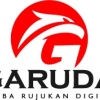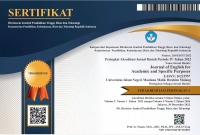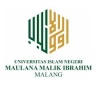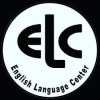The Use of YouTube and TikTok in Improving the Students’ Vocabulary Achievement
Abstract
Full Text:
PDFReferences
Ary, D, Lucy, C dan Asghar, R. 2010. Introduction to. Research in Education, 8th Edition. Canada: Nelson.
Bagheri, E., Roohani, A., and Ansari, D. N. 2018. Methods of teaching on L2 vocabulary learning. Journal of Language Teaching and Research, 3(4).
Calderon, M., August, D., Slavin, R., Duran, D., Madden, N., Cheung, A. 2023. Bringing Words to Life in Classroom with English Language Learners.
Creswell, J. 2012. Educational Research: Planning, Conducting, and Evaluating Quantitative and Qualitative Research. New Jersey: Pearson Education.
Hafisha, A.K. 2022. The Use of Songs Tiktok Application in Teaching Speaking of Eleventh Graders in Software Engineering (RPL1) at SMKN 3 Pamekasan. Undergraduate, Thesis, English Teaching Learning Program (TBI), The State Islamic Institute (IAIN) of Madura.
Harmer, Jeremy. 2015. The Practice of English Language Teaching. London: Longman.
Jones and Godwin. 2017. The Definition of YouTube. Video Sharing Website
McKeown, M.G and Curtis, M.E. 2022. The Nature of Vocabulary Acquisition. New York: Behavioral Sciences, Education.
Nabilah, A., Larassati, D., Lazuwardiyyah, F., Syaifuddin, and Abdi, W.M. 2021. Students’ Perception Toward The Use of Tiktok Video in Learning Writing Descriptive Text At MAN 1 Gresik. Journal of Research on English and Language Learning. Vol 2 No. 1
Nisa, I. S., Anwar, K., and Paulina, P. 2020. Student's Perception Towards the Implementation of YouTube Song Video Content For Learning English Song Lyric. DIDAKTIKA : Jurnal Pemikiran Pendidikan, Vo. 26 No. 1.
Nur’aini, Alfi. 2021. Monetisasi Youtube Perspektif Tafsir Maqashidi. Jurnal Penelitian Agama, Vol 22 No. 1.
Putri, A.W and Rustipa, K. 2023. Using Songs to Teach English Vocabulary to Young Learners in Kindergarten. Educational Research in Indonesia (Indonesia). Vol 4 No 3.
Rohmatillah. 2020. A Study on Students' Difficulties in Learning Vocabulary. English Journal: Journal Tandris Bahasa Inggris IAIN Raden Intan.
Stahl, S.A. 2022. Children Reading Comprehension and Assessment. Lawrence: Erlbaum Associates.
Tan, K. H., Rajendran, A., Muslim, N., Alias, J., & Yusof, N. A. (2022). The Potential of TikTok’s Key Features as a Pedagogical Strategy for ESL Classrooms. Sustainability, 14(24), 16876. https://doi.org/10.3390/su142416876
Taubah, M. 2020. Aplikasi Tik Tok Sebagai Media Pembelajaran Maharah Kalam. Jurnal Mu’allim, Vol 2 No.1.
Vossoughi, Hossein. 2009. Using Word-Search-Puzzle Game for Improving. Vocabulary knowledge of Iranian EFL Learners. Journal of Teaching English as a Foreign Language and Literature of Islamic Azad University.
Wilkins, D.A. 2022. Linguistics in Language Teaching. London: Cambridge University
DOI: https://doi.org/10.18860/jeasp.v7i2.29036
Refbacks
- There are currently no refbacks.

This work is licensed under a Creative Commons Attribution-ShareAlike 4.0 International License.






Editorial Office:
Pusat Pengembangan Bahasa
Program Khusus Pengembangan Bahasa Inggris (PKPBI)
Universitas Islam Negeri Maulana Malik Ibrahim Malang
Gedung C lantai 1
Jl. Gajayana No 50 Kota Malang, Jawa Timur, Indonesia
Kode Pos 65144, Telp/Fax : (0341) 570872
Email: jeasp@uin-malang.ac.id
JEASP : Journal of English for Academic and Specific Purposes is licensed under a Creative Commons Attribution-ShareAlike 4.0 International












